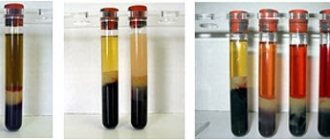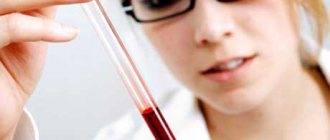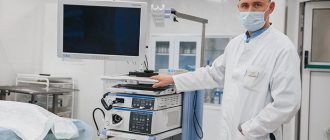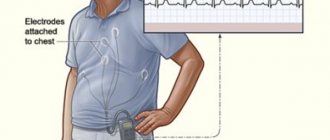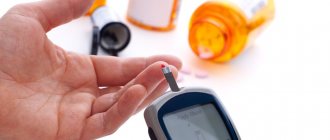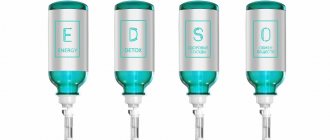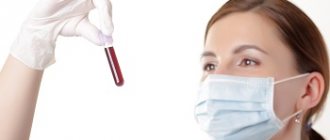Why do they take blood from a vein?
In recent years, modern laboratories have used only venous blood for research. Previously, capillary blood from the ring finger was used for some tests, for example, in the case of a general blood test. With this method of collecting biomaterial, microthrombi often formed, which made it difficult to calculate the studied parameters.
Venous blood collection using vacuum systems
Taking blood from a vein provides comprehensive information about the state of health and allows you to prescribe the necessary instrumental examination methods to clarify the diagnosis. The most frequently used clinical methods are those that reveal the nature of the pathological process, allow the treatment of the disease to be adjusted, and are also used for screening and preventive examinations.
- A general blood test reveals the cellular composition of the blood and ESR. Prescribed for the diagnosis of inflammatory diseases, infections, blood pathologies. Refers to a mandatory examination method during annual medical examinations.
- Blood biochemistry determines the main biological indicators (glucose, proteins, electrolytes, enzymes, lipids) and indicates the pathology of the liver, heart, blood vessels, and the development of oncology.
- Hormonal background studies the level of hormones and the function of the endocrine, digestive system, and metabolism.
- The immunological status determines the state of cellular and humoral immunity, the development of allergic reactions.
Donating blood from a vein is required when diagnosing any disease. Laboratory tests are safe and painless methods for identifying pathological processes in the body.
Taking blood for research
Many factors can influence the result of a blood test, so it is recommended to refrain from taking medications before taking biomaterial. It is also often advised not to even eat food. If it is almost impossible to predict the effect of medications on the body, then due to the absorption of food components, after taking it, it guarantees a shift in hormone levels or deprives the sample of transparency.
Physical overload before analysis can lead to both biochemical and hormonal changes, and alcohol has acute and chronic effects on metabolism and its processes. Smoking, the menstrual cycle in women, receiving physiotherapeutic procedures, time of day, and so on can also affect the result.
Recommendations that should be taken into account when taking blood biomaterial for analysis.
- It is best to take the test in the morning before 10:00. Before taking blood, do not eat for about 8 hours, but do not allow more than 14 hours of bowel rest. You can drink as usual.
- When taking a course of medications, you should consult with your doctor about the need for analysis during this period. Or find out whether it is possible to stop taking medications before taking biomaterial.
- Stop drinking alcoholic beverages at least a day before. Stop smoking for an hour before blood sampling.
- The results of the analysis may be influenced by physical activity and emotional overload. Therefore, they are also advised to be excluded.
How to prepare for the procedure?
The blood collection algorithm requires special preparation for the event. The reliability of the analysis results is influenced by the following factors:
- time of collection of biological fluid;
- food intake, the nature of foods in the diet;
- drinking alcoholic beverages, smoking;
- taking medications;
- physiotherapy;
- intense physical activity;
- stressful situations;
- instrumental diagnostic methods (MRI, ultrasound, x-ray);
- cyclical changes in a woman’s body (mensis).
Before taking blood from a vein, you should adhere to general rules that will increase the efficiency of the study and minimize the risk of obtaining false results.
- Blood is donated on an empty stomach in the morning (8.00 – 11.00). You can drink water without carbon dioxide.
- On the eve of the examination, it is not recommended to overeat, eat salty, spicy, or fatty foods.
- The day before the test, avoid drinking alcohol.
- It is necessary to submit biomaterial before undergoing instrumental examination and physiotherapeutic treatment.
- Coordinate the discontinuation of medications with your doctor.
- One hour before the examination, you should not smoke; it is necessary to exclude stressful situations and physical overexertion.
Repeated blood tests to monitor indicators over time should be carried out under the same conditions (time, diet) and in the same laboratory, since the blood sampling algorithm, study methods and reference values (norms) may differ significantly in different medical institutions.
Material collection rules
RULES FOR BLOOD COLLECTION
Blood collection is carried out on an empty stomach, in the morning, before collection you need to drink 1 glass of water.
In case of urgent need, blood collection can be carried out at any time of the day, but it is advisable that at least 2 hours have passed since the last meal. There are general factors that influence the outcome of research:
- physical stress (running, brisk walking, climbing stairs);
- emotional arousal;
- x-ray irradiation
- eating before the study.
Therefore, the following conditions must be observed:
- Blood is drawn after the subject has rested for 15 minutes;
- Avoid smoking and drinking alcohol immediately before taking blood.
Blood sampling for biochemical studies, hormonal studies and blood serum tests for infections is carried out in plastic tubes without an anticoagulant.
Blood is collected for the study of the coagulation system and a general blood test in special plastic tubes with an anticoagulant.
GENERAL CLINICAL STUDIES
RULES FOR URINE COLLECTION
Urine is collected in the morning, on an empty stomach, and after sleep. Before collecting urine, perform a thorough toilet of the external genitalia.
Long-term storage of urine at room temperature before testing leads to changes in physical properties, cell destruction and bacterial growth.
In this regard, urine can be stored in the refrigerator for some time, but not allowed to freeze!
Urine should be delivered to the laboratory in a disposable or sterilized jar with a lid.
Various types of urine tests.
- General urine analysis.
Collect the entire portion of morning urine with free urination into a clean glass container, mix thoroughly and pour 50-100 ml into a container for delivery to the laboratory. - Urinalysis according to Nechiporenko.
Collect an AVERAGE PORTION of morning urine during free urination into a container for delivery to the laboratory. - Zimnitsky test.
8 portions of urine are collected per day: at 600 in the morning the bladder is emptied (this portion is poured out). Starting from 9.00 am, exactly every 3 hours, 8 portions of urine are collected in separate containers - until 600 am the next day. In this case, urination is carried out in a measuring container, then, after mixing, about 100 ml is taken into a container for delivery to the laboratory. THE TIME AND VOLUME OF THE URINE SERVATION IS MARKED ON EACH JAR. The test is carried out under normal drinking and nutrition conditions - FORCED DRINKING LOAD SHOULD BE AVOIDED. - Quantitative determination of glucose.
Collect daily urine in a single container. After thorough mixing, 100-150 ml are poured into a container for delivery to the laboratory. The VOLUME OF WASTE DIURESIS MUST BE INDICATED on the referral form!
RULES FOR SPECTUM COLLECTION
Morning sputum (before meals), released during a coughing attack, is collected in a sterile jar or in a sterile container (tank) with an airtight lid. Before collecting material, it is necessary to brush your teeth and rinse your mouth with boiled water in order to mechanically remove food debris and oral microflora.
If sputum is released in scant quantities, it is necessary to take expectorants the day before collecting the material. You can use aerosol inhalation, which provokes increased bronchial secretion, or use inhalation of a hot saline hypertonic solution for 10-20 minutes.
Can sputum be stored in the refrigerator at 3-5 C until examination? no more than 3 hours.
Indications for the study:
respiratory tract infections, bronchitis, pneumonia.
RULES FOR FECAL COLLECTION
Feces are collected in a clean, dry, wide-mouthed container. Then 10-15 g are taken into a container for delivery to the laboratory (penicillin vial). The utensils used should not contain traces of chemicals: salt, detergent powders, dishwashing liquid, etc. The material must be delivered to the laboratory no later than 8-12 hours after defecation. Before testing, it can be stored in the refrigerator at 3-5 C?. Bloody, mucous and liquid stools should be examined immediately after defecation, while still warm. If there are pathological impurities in the stool (mucus, flakes, pus), they should be included in the sample taken.
Various types of stool examination.
Test for occult blood.
3 days before the test, you MUST EXCLUDE MEAT, FISH, EGGS, AND GREEN PLANTS from your diet!
Testing for helminths and protozoa.
3 days before the study, it is necessary to avoid taking antiparasitic medications, using oil enemas, rectal suppositories, and X-ray examinations using barium.
Time frame for delivery of material to the laboratory after defecation:
- For helminths – no more than 24 hours.
STUDY OF DISCHARGE OF THE GURINO-GENITAL ORGANS
The material for microscopic examination (smear) is taken with a special sterile disposable brush probe and evenly smeared on a glass slide. When placing smears from different locations on one glass, the POSITIONS OF APPLICATION OF THE SPOKE MUST BE LABELED: “U” – urethra, “V” – vagina, “C” – cervical canal.
A scraping for infection testing (PCR diagnostics) is carried out using a sterile disposable brush probe. The probe brush is placed in a plastic microtube with an Eppendorf cap containing a special medium. Thoroughly wash the brush with the medium (vigorously twisting the probe). The brush is cut off, leaving it in the microtube, the probe is removed and the microtube is closed. An Eppendorf tube with medium and a cutting probe is delivered to the laboratory at the test collection (registration) point.
The material is collected:
- Gynecologist (for women);
- Urologist (for men).
How is biomaterial collected?
The reliability of the analysis results depends on the technique of collecting venous blood, which affects the correct diagnosis, adequate treatment, and restoration of health. Correct venipuncture prevents the development of complications that may arise if the technique is violated. The most common is a through puncture of a vessel with the formation of a hematoma (bleeding) in the surrounding tissues. Neglect of antiseptic rules leads to inflammation of the vein (phlebitis) and the development of general infection of the body (sepsis).
Vacuum tubes are marked with colored caps for different types of laboratory research
A needle, disposable syringe or vacuum system is used to obtain biomaterial. The needle is used to directly pour blood into a test tube. This method is losing its popularity due to the inconvenience of use, the high probability of blood contact with surrounding objects and the hands of medical staff. Drawing blood into a disposable syringe is often used in manipulation rooms of medical institutions. The disadvantage of this technique is the need for additional instruments (test tubes, test systems) and frequent blood hemolysis during the procedure.
Modern diagnostic centers use innovative vacuum systems for collecting venous blood, which consist of a test tube with a vacuum and a chemical reagent inside, a thin needle and an adapter (holder). They are durable, have color-coded caps for various types of tests, completely eliminate contact of the biomaterial with the hands of medical staff, and do not require the use of additional instruments. Donating blood using this method is painless and safe. The possibility of obtaining false research results due to contact of the biomaterial with the external environment is minimal.
Taking urine for analysis
Cytobacteriological examination of urine is a simple test that allows, in particular, to recognize urinary tract infections and identify the microbe.
Recommendations for collection.
Before donating urine for analysis, you should not eat fruits and vegetables, which can change the color of the biomaterial. Taking biomaterial
occurs in a special container. But, before collecting urine, it is important to perform hygiene procedures for the genitals. The liquid obtained in the first seconds of urination is drained into the toilet. Then, if possible without stopping urination, collect the rest of the urine in a special container, which must then be tightly closed with a lid.
It is advisable to hand over the biomaterial on the day of collection. If for some reason this cannot be done, then store the urine at a temperature of + 2 to + 8 °C.
The collection of daily urine occurs in approximately the same way, but the container must be filled with biomaterial within 24 hours. It is important to store the urine container in the refrigerator.
Stool examination
The state of a person’s digestive tract can be revealed by their feces. When analyzing this biomaterial, the following matters: color, smell, hardness and even weight. Most often, excrement consists primarily of water, food debris, bacteria and removed mucosal cells. The color of feces comes from decomposed bile pigments.
A stool examination is necessary if complaints from the digestive tract occur over a long period of time. For example, cramping, pain, diarrhea or constipation. Regular stool testing is especially recommended for people aged 50 years and older. To detect cancer at an early stage if necessary.
Collection conditions:
- Collect the stool in a designated container;
- Label and date the container.
Stool analysis allows you to diagnose various diseases. Stool is often tested for the presence of blood adjuvants as part of colorectal cancer screening or for early detection of cancer precursors. However, stool testing can also detect the presence of worm eggs or bacteria in the stool.
Recommendations for patients to take blood tests from a vein 07/11/2014 08:00
Dear patients! To avoid misunderstandings and in order to improve the quality of assessment of your health, the medical doctor recommends that you pay attention to this article. The quality of your preparation for the tests will determine whether the doctor will see the true state of your health based on the research results.
Check with your doctor to see if testing is advisable if you are taking medications. Most medications have varied and not always predictable effects on laboratory test results. Check with your doctor about how long it takes for your body to remove medications from your body. Eating before taking blood tests from a vein can have both a direct effect on the results due to the absorption of food components, and indirectly - shifts in hormone levels in response to food intake, the influence of sample turbidity associated with an increased content of fat particles. Physical and emotional overload: cause hormonal and biochemical changes. Please, the day before the test, try not to be nervous and not to undergo strong physical activity.
Alcohol: has acute and chronic effects on many metabolic processes, which will have an incorrect effect on test results. Please do not drink alcohol the night before your medical test. Smoking: changes the secretion of certain biologically active substances. Please refrain from smoking. Physiotherapy, instrumental examinations: may cause a temporary change in some laboratory parameters. They should be carried out in advance, but not on the eve of the tests. The phase of the menstrual cycle in women: is significant for a number of hormonal studies; before the study, you should check with your doctor about the optimal days for taking a sample to determine the level of FSH, LH, prolactin, progesterone, estradiol, 17-OH-progesterone, androstenedione.
Time of day when taking blood: there are daily rhythms of human activity and, accordingly, daily fluctuations in many hormonal and biochemical parameters, expressed to a greater or lesser extent for different indicators; reference values—the boundaries of “norm”—usually reflect statistical data obtained under standard conditions when blood is taken in the morning.
General rules when preparing for research:
It is advisable to follow these rules when conducting biochemical, hormonal, hematological tests, complex immunological tests; the results depend on the physiological state of the person.
- If possible, it is recommended to donate blood in the morning, between 8 and 11 o’clock, on an empty stomach (at least 8 hours and no more than 14 hours of fasting, drink water, as usual), and avoid food overload the day before.
- If you are taking any medications, you should consult with your doctor about the advisability of conducting a study while taking medications or the possibility of discontinuing the drug before the study; the duration of withdrawal is determined by the period of removal of the drug from the blood.
- Alcohol – avoid drinking alcohol on the eve of the test.
- Smoking - do not smoke for at least 1 hour before the test.
- Eliminate physical and emotional stress on the eve of the study.
- After arriving at the medical office, it is recommended to rest (preferably sit) for 10-20 minutes before taking blood samples.
- It is not advisable to donate blood for laboratory testing soon after physiotherapeutic procedures, instrumental examinations and other medical procedures. After some medical procedures (for example, a prostate biopsy before a PSA test), laboratory testing should be delayed for several days.
- When monitoring laboratory parameters over time, it is recommended to conduct repeated tests under the same conditions: in the same laboratory, donate blood at the same time of day, etc.
- For a number of tests there are special rules for preparing for the study, which can be found in the relevant sections of the reference book “INVITRO diagnostics. Laboratory diagnostics" and the website www.invitro.ru. See some special dietary requirements and time of day when giving blood samples below.
Minimum requirements: tests for infections, emergency studies - preferably on an empty stomach (4 - 6 hours).
Dietary regime, special requirements: strictly on an empty stomach, after 12 - 14 hours of fasting, you should donate blood to determine lipid profile parameters (cholesterol, HDL, LDL, triglycerides, apo A1, apo B, VLDL, lipoprotein a); a glucose tolerance test is performed in the morning on an empty stomach after at least 12, but no more than 16 hours of fasting.
Time of day when taking blood samples for testing (recommendations)
Designations:
“+” — recommended; “+/-” - allowed with restrictions, the circadian rhythm should be taken into account when studying dynamics and the boundary values of the results relative to the reference limits; “-” is undesirable.
| 12.00 — 17.00 | 18.00 — 8.00 | ||
| Hormonal tests | + | +/- | — |
| Markers of bone turnover (osteoporosis) | + | +/- | — |
| Biochemical tests | + | +/- | +/- (emergency) |
| Vitamins | + | +/- | — |
| Immunological profiles, interferon status | + | — | — |
| Tumor markers | + | + | + |
| Autoimmune markers | + | + | + |
| Allergy tests | + | + | + |
| Complete blood count, coagulology | + | + | +/- (emergency) |
| Infections | + | + | + |
| Complete blood count, coagulology | + | + | +/- |
| Genetic tests | + | + | + |
| Microelements | + | + | +/- |
| hormonal studies | |||
| ACTH | about 9 o'clock | — | — |
| Cortisol | + | — | — |
| Parathyroid hormone | after 9 o'clock | +/- | — |
| Calcitonin | + | +/- | — |
| Aldosterone | + | +/- | — |
| Renin | + | +/- | — |
| Catecholamines | + | +/- | — |
| Prolactin | + | +/- | — |
| Thyroid panel | + | +/- | — |
| Insulin, C-peptide | + | depending from the target | — |
| FSH, LH | + | +/- | — |
| Estradiol, progesterone, testosterone (female) SHBG | + | +/- | — |
| 17-OH-progesterone, androstenedione | + | +/- | — |
| DEA-S | + | +/- | — |
| Beta-hCG (pregnancy test) | + | + | + |
| Testosterone, inhibin (male). | + | +/- | — |
| PRISCA | + | + | — |
| Erythropoietin | + | +/- | — |
| Other hormones | + | +/- | — |
You can submit biomaterial for research using the services of the Home Visit Service with prior approval.
When performing tests for the presence of infections, it should be taken into account that depending on the period of infection and the state of the immune system, any patient may have a negative result. But, nevertheless, a negative result does not completely exclude infection. In doubtful cases, re-analysis is recommended.
Remember! Different laboratories may use different research methods and units of measurement. To ensure correct evaluation of your results and acceptable results, conduct tests in the same laboratory, at the same time. Comparison of such studies will be more correct.
“Then we’re coming to you”: about taking tests at home
Calling a nurse to your home is becoming increasingly popular. This examination format allows you not only to save time, but also to remain in a familiar environment, which is especially valuable for the youngest patients.
The advantages are obvious, but sometimes doubts arise. Read the answers to the most common questions in this article.
“How safe is it to take blood at home? Isn't it sterile?
The procedure is absolutely safe because:
- the usual microflora is not capable of leading to diseases, unlike aggressive hospital microflora;
- the use of modern vacuum test systems completely eliminates contact of blood with the environment, patient or nurse;
- vacuum tubes are always disposable, and their reuse is absolutely impossible;
- as in the laboratory department, the nurse works with gloves, observing all stages of the procedure.
Thus, from a sterility point of view, taking blood at home is even safer than taking it anywhere else.
“What if my tests are mixed up?”
The tubes are marked literally “before our eyes.” The nurse, in the presence of the patient, attaches a special barcode to the sample taken and enters all the data into the laboratory’s unified information system. All order data is embedded in the barcode, including the patient’s full name and the name of the analysis.
The KDL laboratory is fully automated. This means that people take part in the analysis only at the stage of taking blood for analysis, and then it’s a “matter of technology.” The equipment “autonomously” reads the task from the test tube and also uploads the result.
This algorithm of actions allows us to completely eliminate the influence of the human factor on the research results.
“Why are there so many test tubes? Will this lead to excessive blood sampling? Maybe you can do everything from one?”
Until recently, storing and transporting blood samples was an insurmountable problem. All tests were performed “on the spot”; the material was drawn into a syringe and then poured into a test tube. Such samples could not be stored for a long time, so tests could only be taken early in the morning.
Today, the tubes contain a preservative that allows the target blood parameters to be preserved for as long as possible.
For example, test systems for general blood tests contain the anticoagulant “EDTA”. This substance blocks the formation of a clot (which inevitably occurs when blood “stands” in a test tube) and preserves the formed elements of blood in their original form and quantity.
For biochemical analysis, on the contrary, not all the blood is needed, but only its liquid part. It is in it that proteins, enzymes, antibodies and many other biologically active substances “float”. The preservative in this case accelerates the “separation” of formed elements (erythrocytes, leukocytes, platelets) and “stabilizes” the serum.
Thus, the preservative allows not only to obtain reliable results, but also to significantly increase the possibilities of storing and transporting the material.
The maximum volume of blood allowed for a one-time collection from an adult reaches 350 ml, while the volume of the tubes varies from 2 to 9 ml. Thus, it is impossible to exceed the maximum permissible “blood loss”, even if all types of tubes are used simultaneously.
In children, the permissible volume depends on age and body weight (for example, from a child from six months to 3 years old, 10 ml of blood can be taken simultaneously and safely). You can always get advice on this issue in advance.
Absolutely all laboratory employees undergo security checks, and educational information is publicly available. To get acquainted with the information of interest, just go to the official KDL website, section “About us” ® “regulatory documents” ® “medical personnel”.
“What should I do if I need to change my order and the nurse has already arrived?”
Adjusting your order is not difficult. However, it should be remembered that there are studies for which you need to specially prepare. Therefore, if you have difficulty or doubt in choosing tests, we recommend that you seek advice from a doctor at the contact center.
Experienced specialists will not only guide you through the variety of tests, tell you about the preparation rules, but also help you interpret the results.
“How can I get finished results?”
The results of the analysis are sent to the email specified in the contract and are also available in your personal account on the KDL website. The login is the order number, and the password is the phone number.
The choice of notification method of readiness is at the discretion of the patient: it can be mail or SMS, which also needs to be reflected in the contract.
Thus, taking tests at home is not only convenient and high-quality, but also reliable literally “from all sides.”

